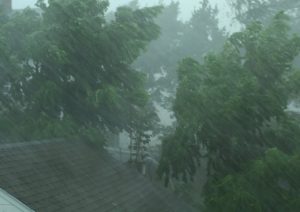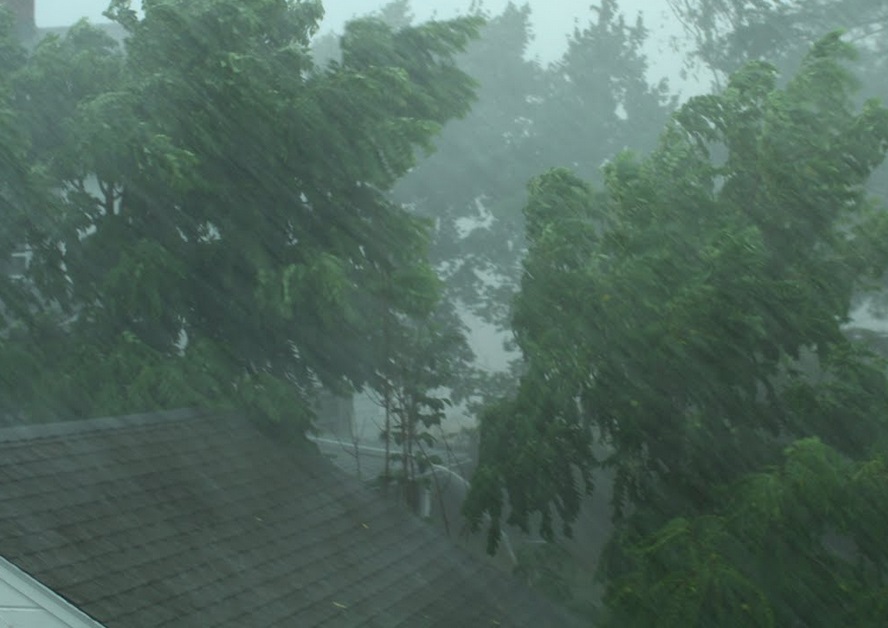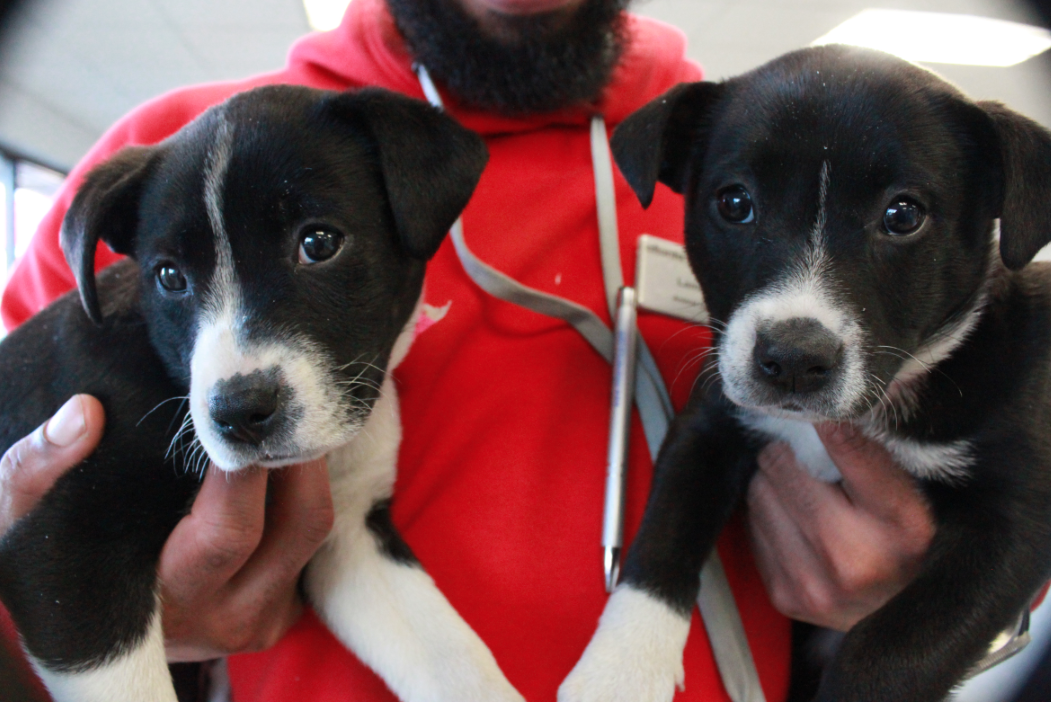More than the state of Florida will be impacted by Hurricane Irma over the next number of days, so wireless giants like AT&T and Sprint are taking the necessary steps to insure that we all are safe.
Arsenals of disaster response equipment and personnel on standby in Georgia and the surrounding states.
AT&T has started its storm preparedness process as we closely monitor Hurricane Irma. The storm is expected to impact the U.S. over the next 24 hours. Preparation includes topping off fuel generators, testing high-capacity back-up batteries at cell sites and protecting physical facilities against flooding. AT&T has also staged other emergency response equipment in strategic locations. Its national reliability center is monitoring outages for quick action.
AT&T has also improved the network redundancy in storm-prone areas. It has installed more generators at critical cell towers and switching facilities, and moved electronics essential to network operations above expected flood levels.
“Customers rely on us, especially during major storms,” said Bill Leahy, President, AT&T Georgia. “That’s why we practice readiness drills and simulations throughout the year. We do all we can to have our networks prepared when severe weather strikes. We’ve worked for the past few days to position equipment and crews to respond to the storm. We’re closely linked with Georgia public officials in their storm response efforts. With a storm of this size, we may have some outages. But if service goes down, we’ll do all we can to get it back up as fast as possible.”
The AT&T Network Disaster Recovery (NDR) program is one of the industry’s largest and most advanced disaster response programs. It includes hundreds of technology recovery and support trailers that can be quickly deployed to respond to disasters. The NDR team works with local AT&T network personnel, regional emergency operations centers and local response centers to keep service going until permanent repairs are made.
Sprint wants to help its customers stay connected with loved ones. Effective through September 9, 2017, Sprint will waive call, text and data overage fees for its Sprint, Boost Mobile and Virgin Mobile customers in Puerto Rico and the U.S. Virgin Islands. Customers on Unlimited plans will continue to enjoy their unlimited data, call and text benefits.
For Sprint, Boost Mobile and Virgin Mobile customers in the U.S., the company will waive all international call and text overage fees to the following: Anguilla, Dominican Republic, Haiti, Turks and Caicos, and British Virgin Islands. For the same period, Sprint will also waive roaming voice and text overage fees for its customers in those locations. Fees will be waived during the time specified. The company will continue to monitor the impact of the storm and may adjust its offerings.
Customers are encouraged to use text messaging when possible due to high call volumes and possible network congestion in the impacted areas.
“The country is only beginning to wrestle with recovery efforts from Harvey, and already, residents of Florida and the Caribbean are bracing for another potentially devastating storm in Hurricane Irma,” said Sprint CEO Marcelo Claure. “During times like these, the cost of staying connected to friends and loved ones should be the last thing on anyone’s mind, and we want to do what we can to support our customers across impacted areas.”
Customers can sign in to their My Sprint account to enable international calling before attempting to make a call. They can also chat with a Sprint International Representative. Customers may cancel international calling at any time following the effective period. More information is available in the Sprint Community forum.
Sprint customers can check the Sprint Store Locator to confirm which stores near them are open. It is recommended that customers first call the store to verify it is open and check the local conditions before traveling to stores. Business customers can contact us through our local customer service department at 1-800-809-9801 or 787-525-3004 24 hours a day, 7 days a week to receive any specific orientation or service to their accounts.
AT&T is also increasing their NDR fleet with new deployables to support first responders as part of our public-private partnership to deliver FirstNet’s nationwide public safety broadband network. When states opt into the FirstNet network, their first responders will have access to more than 700 pieces of equipment, including our Cell on Wheels (COWs), Cell on Light Trucks (COLTs), trailers, generators and more. Our deployables and equipment can help them stay connected during emergencies and operate faster, safer and more effectively when lives are on the line.
Tips: AT&T encourages customers to consider the following recommendations in the wake of the storm.
Customer Tips:
Keep your mobile phone battery charged. In case of a power outage, have another way to charge your phone like an extra battery, car charger or device-charging accessory. Applicable sales tax holidays are a great time to stock up on cell phone accessories.
Keep your mobile devices dry. The biggest threat to your device during a hurricane is water. Keep it safe from the elements by storing it in a baggie or some other type of protective covering, like an Otterbox phone cover.
Have a family communications plan. Choose someone out of the area as a central contact. Make sure all family members know who to contact if they get separated. Most importantly, practice your emergency plan in advance.
Program all of your emergency contact numbers and e-mail addresses into your mobile phone. Numbers should include the police department, fire station and hospital, as well as your family members.
Forward your home number to your mobile number in the event of an evacuation. Call forwarding is based out of the telephone central office.
This means you will get calls from your landline phone even if your local telephone service is disrupted. If the central office is not operational, services such as voicemail and call forwarding may be useful.
Track the storm and access weather information on your mobile device. Many homes lose power during severe weather. You can stay up to speed as a DIRECTV customer, by streaming local weather channels using the DIRECTV application on your smartphone. If you subscribe to mobile DVR, you can also stream every channel directly to your phone.
Camera phones provide assistance. If you have a camera phone, take, store and send photos and video clips of damage to your insurance company.
Use location-based technology. Services like AT&T Navigator and AT&T FamilyMap can help you find evacuation routes or avoid traffic from downed trees or power lines. They can also track a family member’s wireless device if you get separated.
Limit social media activity. Keep social media activity to a minimum during and after a storm to limit network congestion and allow for emergency communications to go through.
Business Tips:
Set up a call-forwarding service to a backup location. Set up a single or multiple hotline number(s) for employees, their families, customers and partners so they all know about the business situation and emergency plan.
Back up data to the Cloud. Routinely back up files to an off-site location. Tools like AT&T Enterprise Recovery Services are cost-efficient and help ensure your important data is there when you need it.
Outline detailed plans for evacuation and shelter-in-place. Practice these plans (employee training, etc.). Establish a backup location for your business and meeting place for all employees.
Assemble a crisis-management team. Coordinate efforts with neighboring businesses and building management. Disasters that affect your suppliers also affect your business. Outline a plan for supply chain continuity for business needs.
Consider a back-up cellular network. Services like AT&T Remote Mobility Zone protect critical communications for businesses. If a disaster disables primary communications networks, the back-up cellular network can help you stay connected.
Keeping the lines open for emergencies
During evacuations, the storm event and its aftermath, network resources will likely be taxed. To help ensure that emergency personnel have open lines, keep these tips in mind:
· Text messaging. During an emergency situation, text messages may go through more quickly than voice calls because they require fewer network resources. All of AT&T’s wireless devices are text messaging capable. Depending on your text or data plan, additional charges may apply.
- Be prepared for high call volume. During an emergency, many people are trying to use their phones at the same time. The increased calling volume may create network congestion, leading to “fast busy” signals on your wireless phone or a slow dial tone on your landline phone. If this happens, hang up, wait several seconds and then try the call again. This allows your original call data to clear the network before you try again.
- Keep non-emergency calls to a minimum, and limit your calls to the most important ones. If there is severe weather, chances are many people will be attempting to place calls to loved ones, friends and business associates.
Stay safe and stay alert. Check on your neighbors and the elderly when possible.




